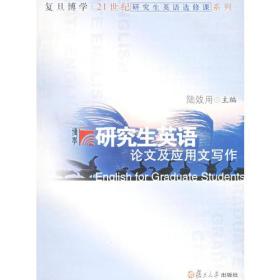
研究生英语论文及应用文写作
批量上传,套装书可能不全,下单前咨询在线客服!图书都是8-9成新,少量笔记,不影响阅读使用!光盘、学习卡、附件等默认不带,有特殊要求,下单前请咨询客服!
¥ 8.8 2.4折 ¥ 36 九品
仅1件
广东佛山
认证卖家担保交易快速发货售后保障
作者陆效用 主编
出版社复旦大学出版社
出版时间2006-03
版次1
装帧平装
货号9787309048971
上书时间2024-11-03
- 在售商品 暂无
- 平均发货时间 6小时
- 好评率 暂无
- 最新上架
商品详情
- 品相描述:九品
图书标准信息
- 作者 陆效用 主编
- 出版社 复旦大学出版社
- 出版时间 2006-03
- 版次 1
- ISBN 9787309048971
- 定价 36.00元
- 装帧 平装
- 开本 其他
- 纸张 胶版纸
- 页数 395页
- 字数 475千字
- 【内容简介】
-
《研究生英语论文及应用文写作》(Academic & Technical Writing for Graduate Students)是为了适应研究生英语课程改革的需要而编写的。编写目的是: 通过课堂教学和课内外练习,切实帮助研究生提高实用英语写作能力。学习外语的人都知道,在听、说、读、写四项语言技能中,写是最难的,也最见语言功底。母语写作是这样,外语写作亦然。编写本书就是想帮助研究生闯过英语写作这道难关。
本教材具有以下几个特点:
一、 实用性。如书名所示,本教材不是讲授一般性英语文体(如记叙文、描写文、说明文和议论文)的写作技巧,而是专门讲授英语论文和应用文的写作技能。这些技能是每一位研究生在专业学习或求学、留学、谋职时,必须具备的外语能力。
二、 针对性。本书的阅读对象是英语非母语的中国学生。在编写过程中,我们始终把学生的需求放在首位。每一单元在阐述英语论文或应用文的写作特点、内容和要求时,还提供了许多适用的英语句型和表达方式,供学生借鉴之用。
三、 创新性。目前在国内图书市场上,常用英语文体的写作教材较多;而英语论文及应用文的写作教材,不但数量较少,而且内容也往往浅显有余、深度不够,不适合研究生层次的实际需求。我们在分析比较了国内外多本写作教材的基础上,取长补短,推陈出新,编写了这本反映时代要求、适合研究生使用的新一代英语写作教材。这对于培养和提高研究生的英语笔头交际能力,无疑将起到一定的推动作用。
在此,我们还想强调一点: 英语写作能力的培养和提高与其他语言技能、尤其是阅读技能的提高是密切相关的。因此,学生在着重训练写作能力时,还要兼顾其他语言技能的训练。
本书由复旦大学外文学院大学英语教学部研究生教学分部承担编写任务。陆效用教授任主编,主要编写人员还有陈淇、范若恩、夏威、何静。曾道明教授任主审。美籍语言教师Grant Pemberton审阅了全书,Larry Delugose审阅了部分章节。范若恩除了参与编写外,还做了大量电子版的输入及编排工作。 - 【目录】
-
PART ONE 论文写作篇
Unit One 优秀论文写作概述
1.1 Introduction
1.2 Characteristics of Effective Writing
1.3 Steps to Successful Writing
1.4 The Style of Academic Writing
Unit Two写作技巧:由一般到具体的语篇
2.1 Introduction
2.2 The Structure of GeneralSpecific Texts
2.3 Basic Principles in Writing Definitions
2.4 Sentence Definitions
2.5 Extended Definitions
2.6 Contrastive Definitions
2.7 Comparative Definitions
2.8 Generalizations
Unit Three写作技巧:先问题后解答的行文
3.1 Introduction
3.2 The Structure of ProblemSolution Texts
3.3 Presenting the Problem
3.4 Proposing Solutions
3.5 Evaluation
Unit Four 写作技巧:图表使用和数据评述
Ⅰ. Graphic Aids
4.1 Introduction
4.2 Types of Graphic Aids
4.3 Language Focus: Expressions in Describing Graphs
Ⅱ. Data Commentary
4.4 Introduction
4.5 Strength of Claim
4.6 The Structure of Data Commentary
4.7 Qualifications and Strength of Claim
4.8 Concluding a Commentary
4.9 Dealing with Imperfect Data
Unit Five 写作技巧:概要写作
5.1 Introduction
5.2 Summary, Analysis and Abstract
5.3 Elements of a Good Summary
5.4 Characteristics of a Good Summary
5.5 Steps in Writing a Summary
5.6 Language Focus:Summary Opening Sentences and Reminder Phrases
5.7 Comparative Summaries
Unit Six 写作技巧:评论文写作
6.1 Introduction
6.2 Critical Thinking
6.3 Preliminary Steps in Writing a Critique
6.4 The Format of the Critique
6.5 Language Focus:The Grammar of Critiques
Unit Seven 论文写作:导论及文献综述
Ⅰ. Introduction Sections
7.1 Introduction
7.2 Characteristics of an Effective Introduction
7.3 How to Write an Introduction
7.4 Language Focus:Opening Statements
Ⅱ. Literature Reviews
7.5 Introduction
7.6 The Importance of Literature Reviews
7.7 How to Write a Literature Review
7.8 Language Focus:Tense in Citation and Negative Statements
Unit Eight 论文写作:方法与结果
Ⅰ. Methods
8.1 Introduction
8.2 Ingredients of the Methods Section
8.3 Language Focus:Imperative Sentences
Ⅱ. Results
8.4 Introduction
8.5 Ingredients of the Results Section
8.6 Commentary in the Results Section
Unit Nine 论文写作:讨论与结论
Ⅰ. Discussion
9.1 Introduction
9.2 The Variation of Discussion
9.3 The Difference Between Results and Discussion
9.4 How to Present the Discussion
9.5 Strategies for Opening the Discussion Section
9.6 The Discussion of Results
Ⅱ. Conclusions
9.7 Introduction
9.8 How to Write a Conclusions Section
9.9 Components of the Conclusions
9.10 Ineffective Conclusions
9.11 Language Focus:Transitions and Useful Expressions
Unit Ten 论文写作:标题、摘要、致谢和文献目录
Ⅰ. Titles
10.1 Functions
10.2 Guidelines
10.3 Mechanics
Ⅱ. Abstracts
10.4 Introduction
10.5 Components
10.6 Language Focus:The Grammar of Abstracts
Ⅲ. Acknowledgements
10.7 Introduction
10.8 Components
10.9 Sample Acknowledgements
Ⅳ. Bibliographies
10.10 Introduction
10.11 Documentation Styles
10.12 Preferences for Documentation Style
Unit Eleven 论文写作:抄袭现象和文献引注
Ⅰ. Plagiarism
11.1 Introduction
11.2 How to Avoid Plagiarism
Ⅱ. Documentation
11.3 Introduction
11.4 What to Document
11.5 InText Documentation
Unit Twelve 学术翻译:论文摘要汉译英
12.1 Introduction
12.2 What to Be Translated
12.3 Language Focus:Linguistic Features of Abstracts
PART TWO 应用文写作篇
Unit Thirteen 电子邮件
13.1 Introduction
13.2 The Compose Window
13.3 How to Write and Reply to an Email
13.4 “Body Language” and Acronyms in Email
13.5 Formal Email Etiquette
Unit Fourteen 备忘录
14.1 Introduction
14.2 The Format of the Memo
14.3 Types of Memos
Unit Fifteen 计划书
15.1 Introduction
15.2 The Purpose of a Proposal
15.3 Components of a Proposal
15.4 Types of Proposals
Unit Sixteen 工作进展报告
16.1 Introduction
16.2 Contents of a Progress Report
16.3 The Format of the Progress Report
Unit Seventeen 简历与信件
Ⅰ. Résumés
17.1 Introduction
17.2 Components of a Résumé
17.3 The Chronological Résumé
17.4 The Functional Résumé
Ⅱ. Application Letters for Graduate Studies
17.5 Introduction
17.6 Application Letters for Graduate Programs
Ⅲ. JobApplication Letters
17.7 Introduction
17.8 How to Write JobApplication Letters
Ⅳ. Recommendation Letters
17.9 Introduction
17.10 The Basic Structure of the Recommendation Letter
17.11 Language Focus:Useful Expressions
Unit Eighteen 口头陈述
18.1 Introduction
18.2 The Role of Oral Presentations
18.3 Preparing an Oral Presentation
18.4 Giving the Oral Presentation
18.5 After the Presentation
Appendix Key to Activities and Exercises
点击展开
点击收起
— 没有更多了 —


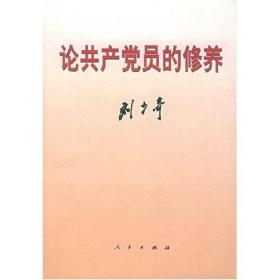
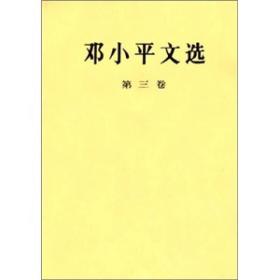
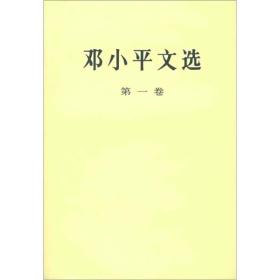

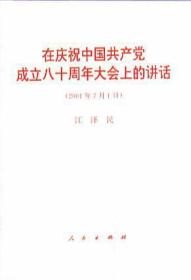

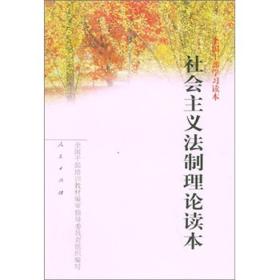
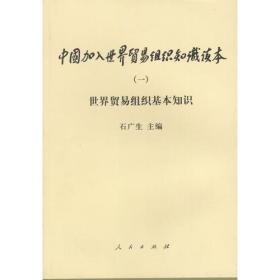


以下为对购买帮助不大的评价